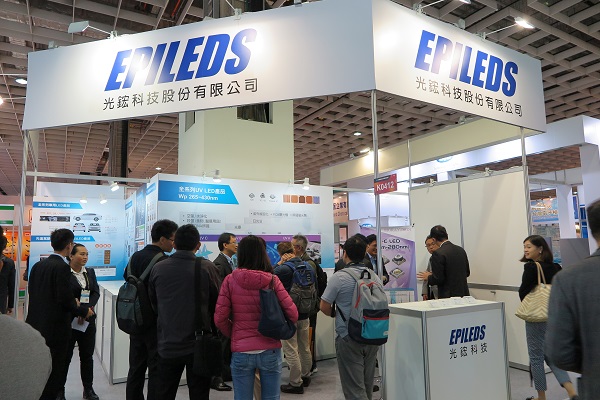LED epi-wafers and chips supplier Epileds has posted flat revenue in 2H17 due to seasonal headwinds and the relocation of its factory. Nevertheless, the company’s gross margin and profit have remained stable during this period. Furthermore, Epileds this year is expected to achieve its best EPS for the three-year period starting from 2015. Currently, equipment installation is taking place at Epiled’s new factory. The relocation process is scheduled to be completed by the end of 2017, allowing the new factory to begin operation in 2018. At the same time, Epileds is reported to have started developing its Micro LED products.
 |
|
(Image: LEDinside) |
Looking ahead to 2018, seasonal headwinds will continue to affect Epiled’s performance up to the Chinese New Year holidays in February. The market for LED chips will pick up again after the Chinese New Year, and Epiled’s new factory will start to ramp up its capacity to meet the returning demand during 1H18. The additional pieces of equipment that Epiled has purchased for the new factory are mostly second-hand equipment, so their room for further depreciation will be limited.
Also, Epileds is expected to see noticeable growths in its product shipments in 2018 as the company uses its expanded capacity to churn out new products. Annual shipments of AlInGaP LEDs, for example, are forecast to go up by at least 30% from this year, while the volume growth of the UV-A products is projected to again come to 10% or greater. As for Epiled’s UV-C products, they are still being sampled by prospective customers. Epiled’s UV-C strategy focuses on the consumer appliances segment. The goal is to differentiate from the Japanese competitors that focus on UV-C components in medical equipment.
In addition, Epileds has made a series of adjustments in its product mix over the recent years. The share of blue LEDs, which was previously significant, has been scaled back to around 20% of the company’s product mix. Conversely, the share of multi-color LEDs, which are used in various non-consumer applications, has increased. The scope of deployment for multi-color LEDs includes automotive lightings, ornamental lightings, stage lighting, grow lights for plants, and surveillance systems. In the case of AlInGaP LEDs, their share in Epiled’s product mix has grown to surpass 40%. Green LEDs and UV LEDs also make up 10-20% and around 20% of the company’s product mix, respectively.
In response to emerging trends within the LED industry, Epileds is now investing in the R&D of Micro LEDs and Mini LEDs. The company has also expanded its offerings of chip-scale packages (CSP) that are customized in accordance with the clients’ specifications.
The largest shareholder in Epileds is Catcher Technology, a Taiwanese company that provides material solutions. Catcher currently holds 7.3% of Epileds.
From a wider perspective, Epileds was at the break-even point throughout 2015 as the company was impacted by the changes in the industry and saw a sizable decline in its gross margin. In 2016, Epileds managed to make a turnaround in revenue and profit by adjusting its product mix. However, the after-tax profit margin for 2016 was also cut down significantly by unfavorable exchange rate movements and investors redeeming their convertible bonds in the company.











